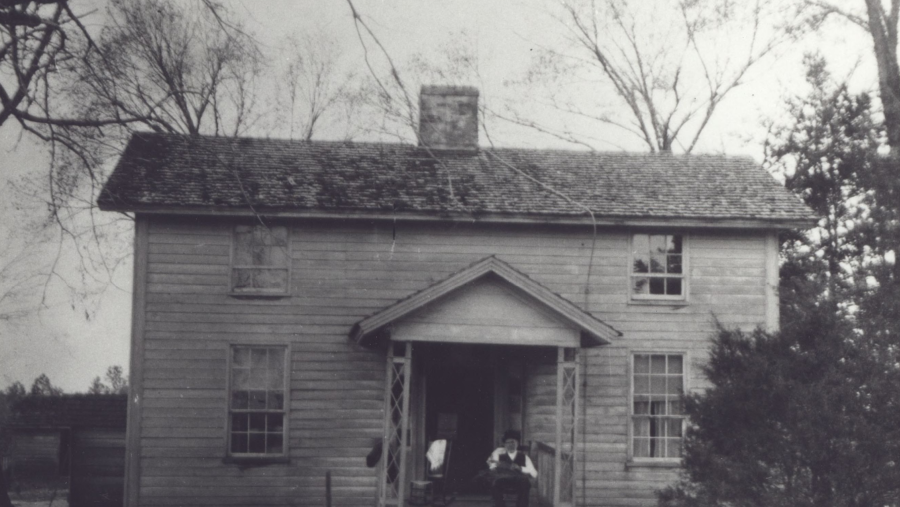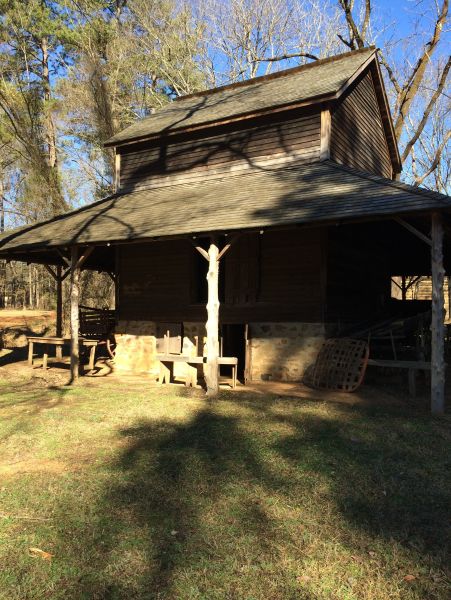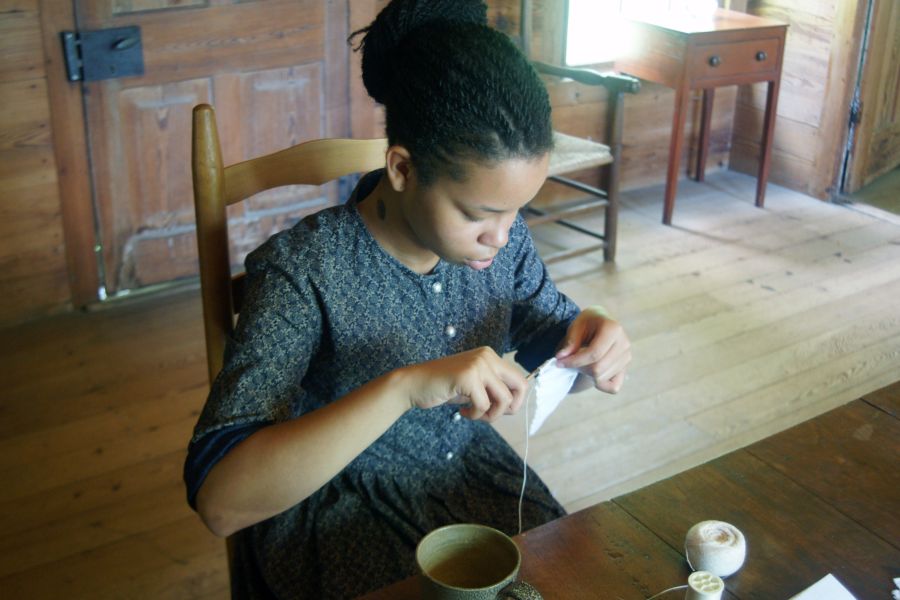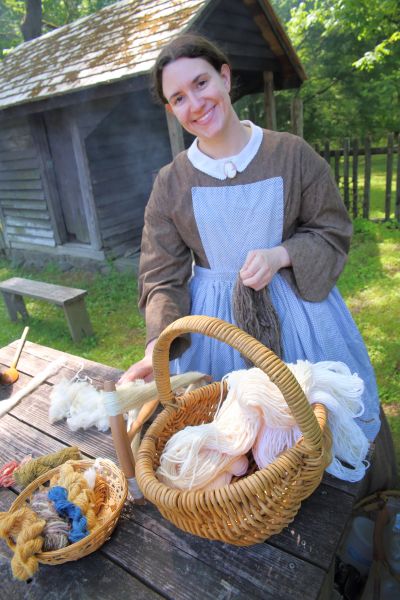Black Perspective: A Visit to Durham's Stagville State Historic Site
Historic Stagville tells a story of Durham's beginnings and the enslaved people who's lives and work led to the city we know... Read More
From agriculture and infrastructure supported by the enslavement of Africans to The American Civil War, the city of Durham has an intricate and complex history and it includes tobacco.
Posted By Ronny Maye on Jun 05, 2024
Any day of the week, you can find yourself in arguably one of the most vibrant parts of Durham, the American Tobacco Campus. It is a hub of new and blossoming businesses spanning several industries, office and event spaces, amazing entertainment, and overall the place to be. But, have you ever stopped to think about the name of the space and why tobacco is such an integral part of Durham’s history?
Duke Homestead State Historic Site and Tobacco Museum are some of North Carolina’s historic sites providing insight into Durham and its connection to tobacco. That insight starts with getting familiar with The Duke Family.

Duke Homestead is one of the multiple well-preserved historic sites in Durham. Photo: Durham County Library Historical Photo Collection
American Tobacco Campus and other former tobacco warehouses are a part of Durham’s history, but that history starts with The Duke family. The family’s empire began with Washington Duke, a farmer, Confederate soldier, entrepreneur, and philanthropist born in 1820 in Orange County, North Carolina. Duke’s first wife Mary Caroline Clinton bore two children, Sidney Taylor Duke, and Brodie Leonidas Duke. His youngest three children, Mary Elizabeth Duke, Benjamin Newton Duke, and James Buchanan Duke were born in his union with his second wife, Artelia Roney. As Duke became more successful, he focused on humanitarian projects, education, community support and other wildly growing industries like textiles and power. His efforts and donations also brought forth Trinity College, now known as Duke University.
Truthfully, tobacco was not new. It was a popular crop cultivated by native people. They used it as a medicinal aid and in religious ceremonies. From there, it began to travel through Europe, Africa, and Central America before finding success in America. Because of our lush soil, tobacco grew fairly well in eastern North Carolina.
A skilled farmer with knowledge of growing crops like sweet potatoes, corn, and wheat, Duke tried his hand at farming tobacco after the death of his second wife. After serving in The Civil War, Duke set his sights on manufacturing tobacco rather than growing it after witnessing Union soldiers gleefully partake in the strand, Golden Leaf. Duke erected a small frame house (that still stands today) and began to process smoking tobacco. It wasn’t long before the product erupted, making Durham and The Dukes a household name for tobacco. In 1869, his son, Brodie Duke, established the family's first factory in Durham, eventually opening more and moving into the production of cigarettes. The family went on to merge with their leading competitors and created the largest tobacco company in the world, the American Tobacco Company.

See the old, preserved buildings at Duke Homestead. Photo: Discover Durham
Washington Duke was undoubtedly a pioneer in the American tobacco industry. With his sons, he revolutionized the industry with innovative practices creating a multi-million dollar business that spanned decades. Duke built his family home and other structures on 300 acres of farmland. Given the ages of his children, it’s not probable that they assisted in constructing the family home, and there isn’t much mention of his nine siblings. The more I learned about Washington Duke and his empire, the more I wondered how he accomplished all of this alone. The simple answer is slavery and free labor.
With agriculture and slavery being huge profit sources for Southerners, a business structure of this magnitude relied on skilled laborers.
The vast majority of stories will boast that Washington, a skilled farmer himself from childhood, performed most of the daily duties without the help of slaves. I interpreted this to mean he did not have field slaves of his own. Records (shared on The Historic Sites website) do indicate that Duke did rent enslaved people from neighboring plantations and farms. One such person was Jim, who aided in growing and curing tobacco. Those records also indicate that Duke purchased a tween, Caroline for $601 in 1855. The young girl’s mother and sister were sold to different slave owners. At such a young age, Caroline was likely a house slave caring for his young children and household. Our tour guide also mentioned another pivotal member of the Duke home. As the nation moved into Reconstruction and post-slavery era, one census record lists a 25-year-old male, Alexander Weaver, a free Black laborer working for the family as a member of the Duke household.

Learn the stories of the Black laborers who were essential to Duke Homestead's success. Photo: Patricia Amurray / Discover Durham
The farm started as a gift inherited from the family of Duke’s first wife and grew into a 300-acre property. Washington lived there with all five of his children and second wife from 1852 to 1874. Duke Homestead is well preserved consisting of several historic structures: the family home, a tobacco pack house, a tobacco curing barn and their third tobacco factory.
When you visit, you can begin by watching the film “Legacy of The Golden Leaf.” This award-winning documentary chronicles the Duke family and their influence on the tobacco industry.
As we moved through the site, we saw and learned more about what farming looked like in the 1800s. The site also houses The Tobacco Museum which uniquely merges the artifacts across the farm and inside the museum to vividly demonstrate the evolution of tobacco farming and the day-to-day life of the Duke family as farmers. We were able to see the process of manufacturing and advertising tobacco as well. It was also interesting to see the evolution of tobacco, cigarette, and snuff apparatuses.

See what day-to-day life looked like on Duke Homestead. Photo: Bill Russ
While the tour and museum were informative, I wish there was more dedicated to sharing the lives of Caroline, Jim, Alexander, and the other enslaved (or free) persons who contributed to the success of Washington Duke, his sons, and The American Tobacco Company.
Location: 2828 Duke Homestead Rd.
Hours: Tuesday - Saturday, 9 a.m. - 5 p.m.
Guided Tours: Tuesday - Friday, 15 minutes past the hour, 10:15 a.m. - 3:15 p.m.
Accessibility: Duke Homestead visitor center is accessible to all visitors; a one-quarter-mile path to the historic builds is unpaved and accessible with assistance.
Admission: Free, though donations are welcomed.
Guided tours: $2; $1 for seniors or children ages 5-12.
Learn More: For more information, including special events, educational programs and group tours, visit the official Duke Homestead website.
Black Perspective: A Visit to Durham's Stagville State Historic Site
Historic Stagville tells a story of Durham's beginnings and the enslaved people who's lives and work led to the city we know... Read More
Plan A Visit To State Historic Site: Bennett Place
Discover Bennett Place Historic Site, the location of the largest surrender of Confederate troops in the American Civil War Read More